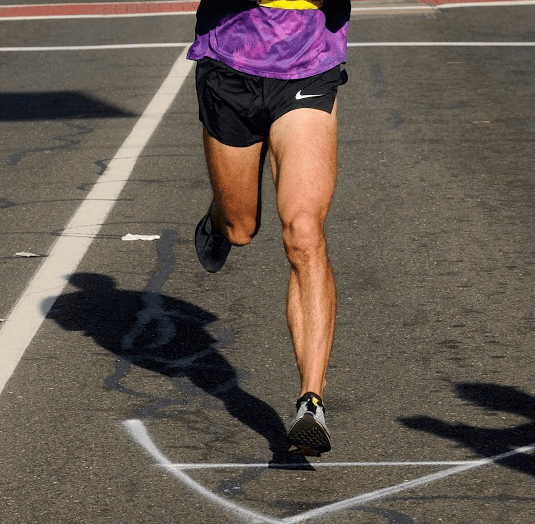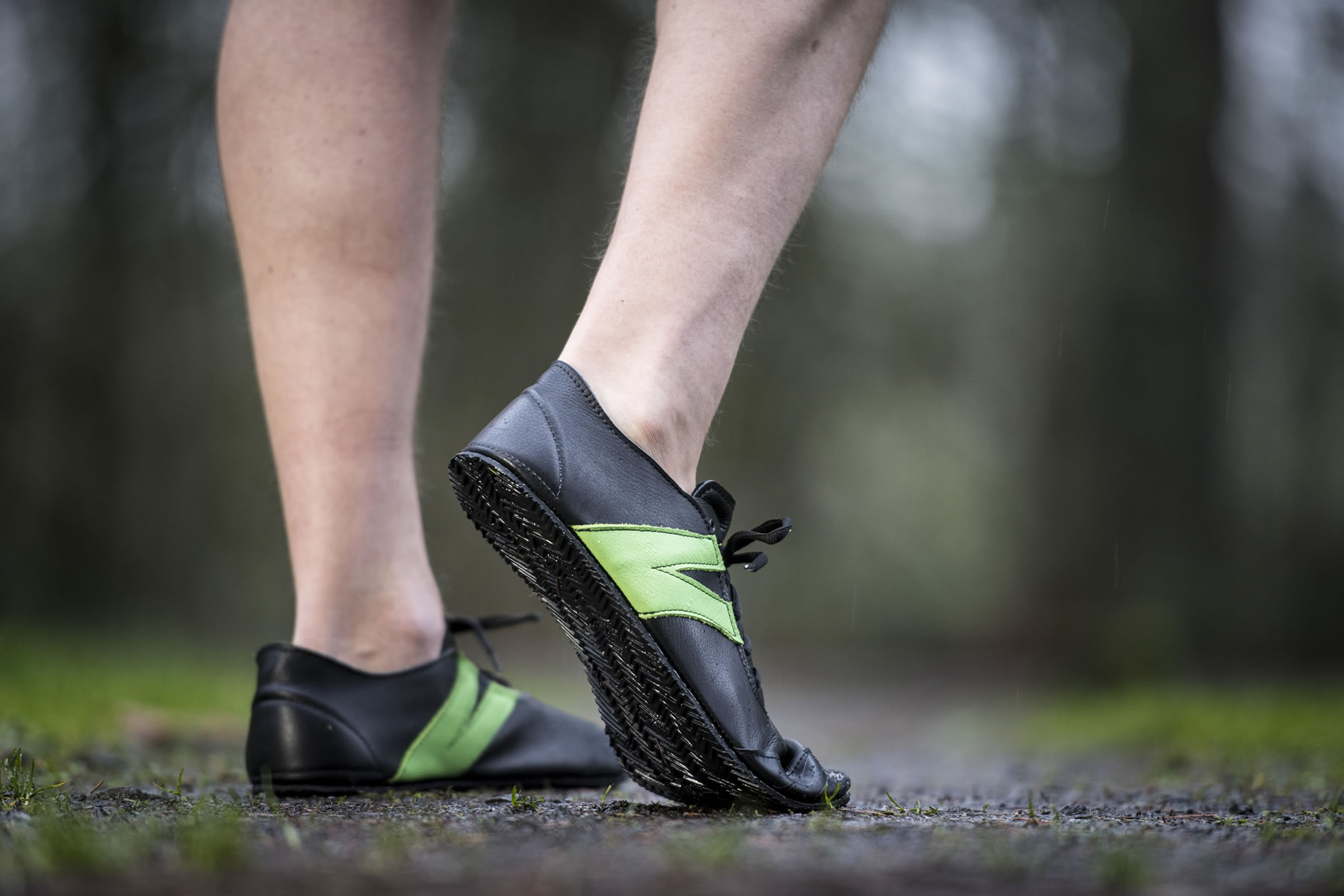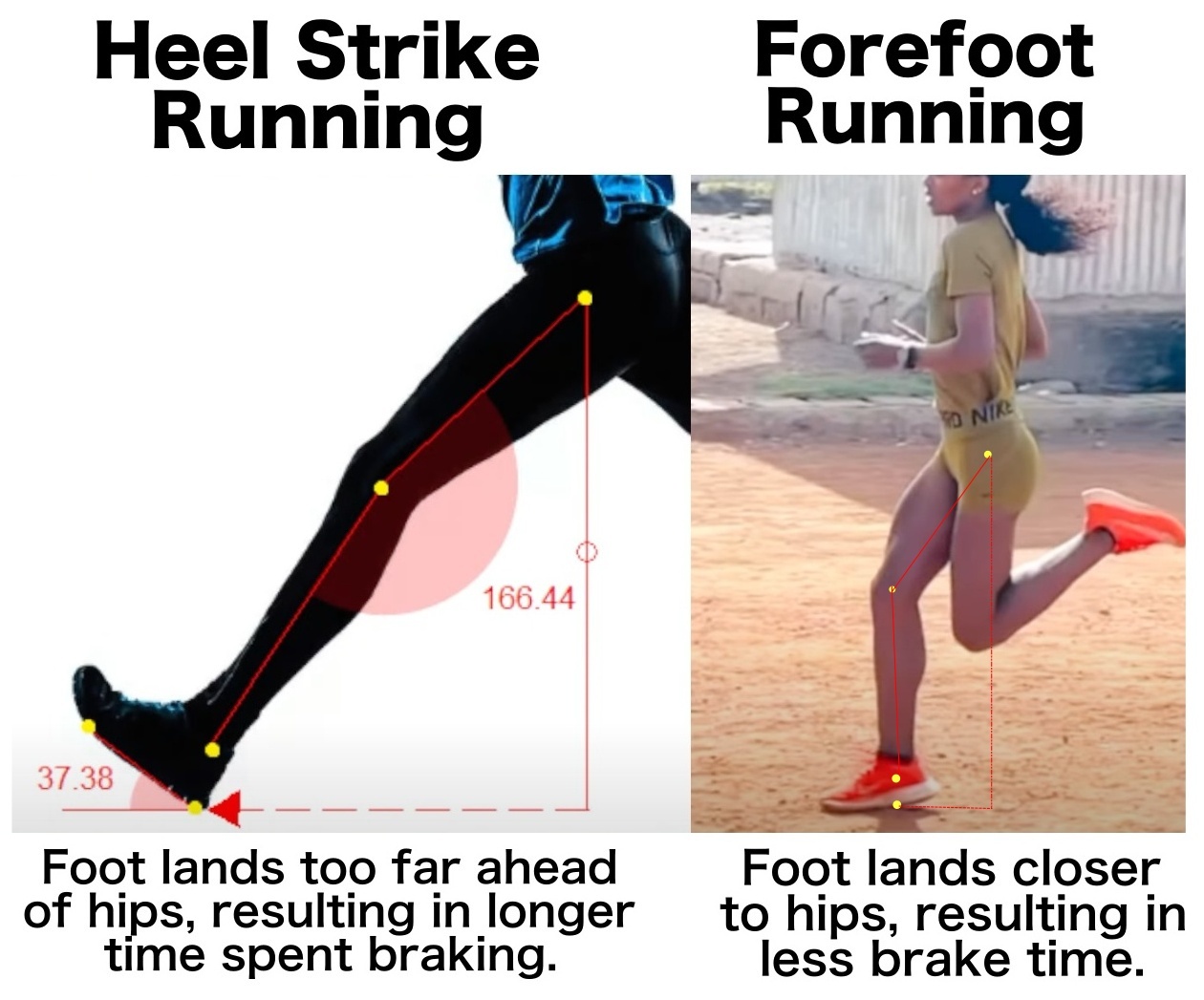The reason why heel striking is so bad for running is because it’s the only foot strike pattern in running that produces the impact forces that directly cause long bone fractures, such as a femur fracture.
Femur fractures are most prevalent in heel strike running and rare in forefoot running. The femur is not only the longest bone in the body, but is also the strongest, and if humans were born to run, then why is this big bone so vulnerable to injury? It’s only vulnerable to injury in running if you land with a heel strike, but is most protected from impact and injury if you land with a forefoot strike.


Researchers use the shock wave/chronic overload model to show how heel strike running causes long bone injuries, such as a femur fracture.
The shock wave/chronic overload model shows that heel strike running produces shock loads and propagated shockwaves which causes chronic overloading that disrupts the balance between micro-damage formation and its removal.
- The specific type of impact implicated in producing the shockwave at heel strike is the heel strike-transient, which is accompanied with shock loads that are measured in high levels in the long bones.
- The shock loads travels up the musculoskeletal system as a propagation shock-wave and continues to propagate with each subsequent step during heel strike running.
Its important to underscore that no such model exists in forefoot running because forefoot running significantly reduces all-around impact levels and results in a contact with the ground that’s so brief that some impact forces aren’t even produced!
But can’t a heel strike runner just wear thicker cushioned running shoes for better impact protection? No, because the same lines of research have found that heel cushioning actually amplified impact, which is even more concerning because the model found that surprisingly low magnitudes of the shock wave was enough to produce chronic overloading.
Case in point, Aliphine Tuliamuck, Kenensia Bekele and Krista Duchene adopted a heel strike landing when they switched from the track to running the marathon on the roads in super shoes, and broke their femur! No forefoot runner, especially at the elite level, has ever broken their femur!
The threat of a femur fracture looms as soon as a heel strike runner suddenly increases their mileage within a short time. This is why femur fractures are most common in heel strike runners who run the marathon. Whats worse, long bone injuries are concerning in long distance runners because these injuries are more likely to re-occur because maintaining heel strike is the reason chronic overloading exceeds the capacity of the femur to resist loads.
Forefoot Running is Best!
Chronic overloading is an unavoidable consequence of heel strike running. This means the only way to prevent a femur fracture is by avoiding heel striking when running and switch to a forefoot strike!
Robbins and Waked also reported that habitual barefoot runners (forefoot runners) are not subjected to chronic overloading. This is because when you land with a forefoot strike when running, it closes the distance between initial foot strike position and the upper body (shown below). This reduces the time spent braking with the ground whereby reduced braking prevents high compressive loads, thereby preventing chronic overloading from being produced and is how forefoot running sustainably and optimally un-stresses the long bones.
Last but not least, always remember that humans were meant to run, so why would natural selection evolve humans to run with a heel strike? It didn’t. It evolved humans to run with a forefoot strike. Forefoot running is the evolutionary novelty that gave a huge, life-long advantage to humans: running without injury!
For more on forefoot running, you’ll love my YouTube channel here, where I go into more detail on why forefoot running is the safest, most efficient way to run vs heel strike running!
References:
Manojkumar et al. Bilateral stress fracture femur presenting with thigh pain. Saudi J Sports Med, 2014; 14(2):172.
Robbins SE, Hanna AM. Running related injury prevention through barefoot adaptations. Medicine and Science in Sports and Exercise 19: 148-156, 1987
Robbins SE and Gouw GJ. Athletic footwear and chronic overloading: a brief review. Sports Med, 1990; 9(2):76-85.
Warden S., Davis IS and Fredericson, M. Manage and prevention of bone stress injuries in long distance runners. J Orthop Sport Phys Ther, 2014; 44(10):749-817.

If you’d like, you can support Run Forefoot and help keep it going by making a donation in any amount of your choosing:

Or, you can also support Run Forefoot by shopping at the following top minimalist shoes brands, and be sure to bookmark the links:
Be Lenka: https://www.dpbolvw.net/click-7600968-14330828
FeelGrounds: https://www.feelgrounds.com/?p=RunForefoot
Xero Shoes: https://xeroshoes.com/go/Run_Forefoot
Iguaneye: https://www.iguaneye.com/?ref=8tfXVc92
Soft Star Shoes: https://shrsl.com/3mp1b
Wilding Shoes: https://bit.ly/3lIygQP
Earth Runners: https://earthrunners.com/?rfsn=6763579.f7f9c9
Vivobarefoot: https://shrsl.com/3kvih
Zappos: https://goo.gl/J1CeAd
Bretta Riches
BSc Neurobiology; MSc Biomechanics candidate, ultra minimalist runner & founder of RunForefoot. I was a heel striker, always injured. I was inspired by the great Tirunesh Dibaba to try forefoot running. Now, I'm injury free. This is why I launched Run Forefoot, to advocate the health & performance benefits of forefoot running and to raise awareness on the dangers of heel striking, because the world needs to know.
Latest posts by Bretta Riches (see all)
- Cushioned Running Shoes Found to Be Bad for Ankles - 23/04/2024
- Forefoot Running and Achilles Pain - 19/04/2024
- Does Foot Strike Really Matter in Running? YES! - 17/04/2024

